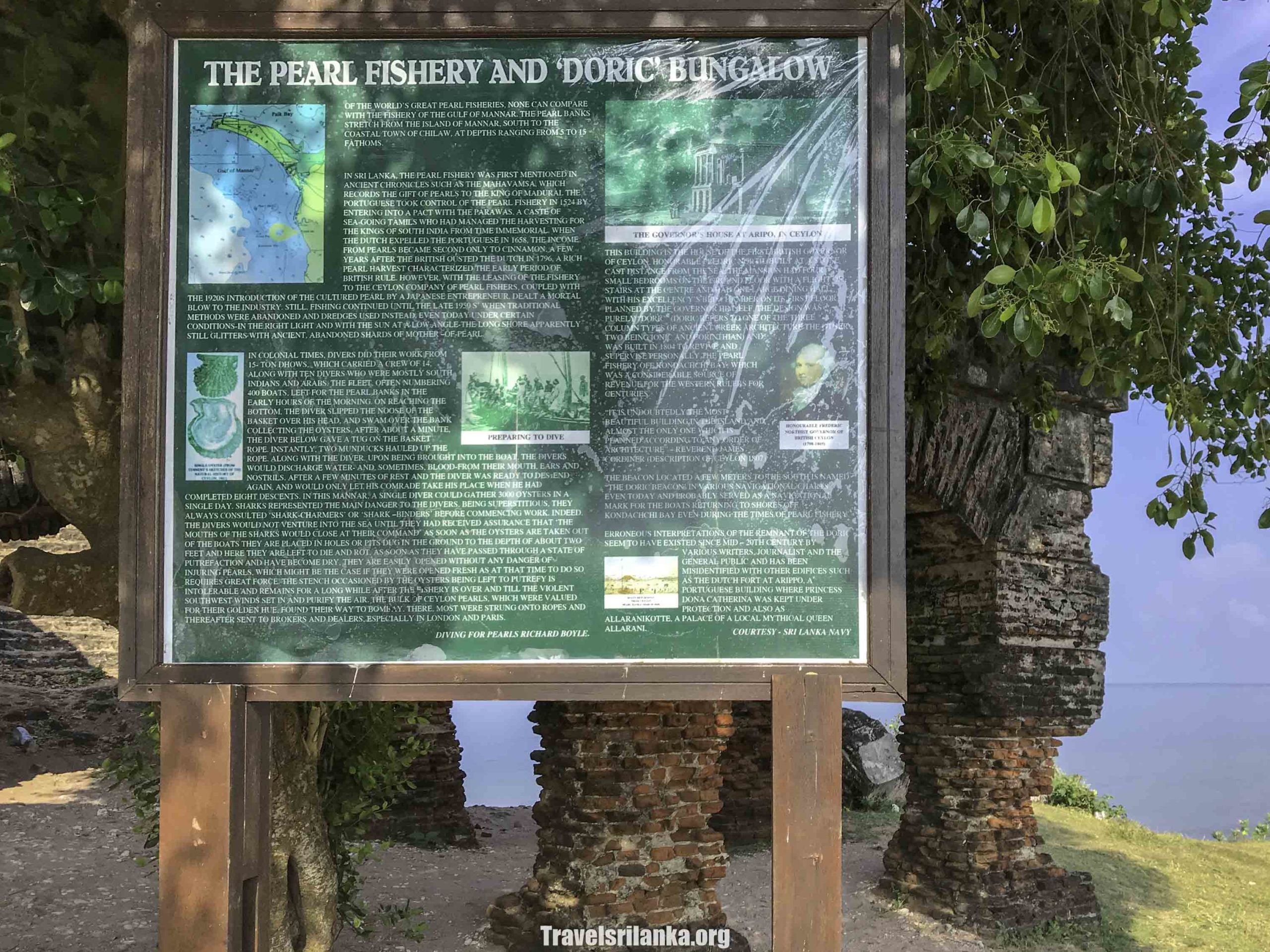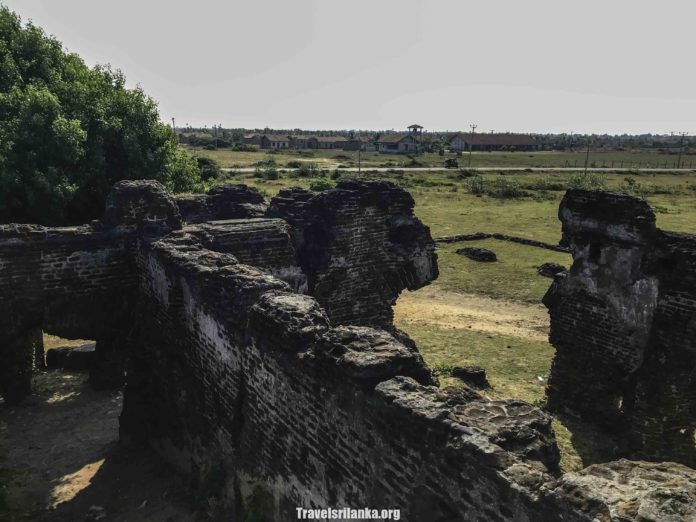Explore the historical significance and architectural marvel of the Doric Bungalow, a unique relic amidst nature’s splendor in Mannar, Sri Lanka.
Is there anything on this Earth that communicates with and delights us as profoundly as nature? Nature grants everyone an unparalleled connection, surpassing even human bonds. The Doric Bungalow stands as a stunning testament to the harmonious interaction between people and their environment. A wanderer exploring the Doric Bungalow’s remnants amidst the salty sea breeze at sunset can truly fathom the depth of nature’s benevolence toward humanity.
Governor Frederick North, the original owner of the Doric Bungalow, constructed this cliffside residence near Silawathura below Mannar and also owned the adjacent image. As the first governor after Sri Lanka became a British colony, North chose to establish his official residence in North Kara, far from Colombo, for a specific reason. He aimed to fulfill the British rulers’ ambition of obtaining pearls and precious gems from Kondachi Bay in Mannar and transporting them to their homeland. This necessitated North’s frequent presence in the Silawathura area of Mannar to oversee pearl harvesting operations. It’s conceivable that he built this mansion as a beautiful retreat on Mannar’s shore for these excursions.
Erected between 1802 and 1804, the Doric Bungalow now stands as a collection of ruins, with brick walls and a few towers remaining. Archaeological surveys indicate that it was a spacious mansion with four rooms on the ground floor and a large living and dining area on the upper level. More than just a residence, it is a masterpiece of art bestowed upon the earth by a creative mind.
The Doric Bungalow’s design is remarkable for its seamless integration with the environment, maximizing aesthetics while ensuring the residents’ comfort. The beauty and comfort of this mansion were also extolled in the book ‘Description of Ceylon.’ Father James Codner’s 1807 book, containing archaeological insights, mentions the Doric Bungalow as a unique edifice in Ceylon.

Positioned on a cliff facing the North Sea, the Doric Bungalow welcomes the sea breeze directly into its interior. This orientation likely aimed to mitigate Mannar’s hot climate’s impact on the house. Additionally, the mansion’s most distinctive feature is its construction entirely of clay bricks, with walls thicker than usual. Undoubtedly, these thick mud brick walls provided a cool sanctuary within the building. Frederic North, accustomed to England’s mild climate, employed these strategies to recreate the climate and comfort of his English home in a dry Mannar.
The mansion’s large bedroom upstairs is believed to have been North’s sleeping quarters. He designed the living room to capture the allure of sunsets and the caress of sea breezes. Archaeologists suggest that the Doric Bungalow, constructed entirely of bricks, featured substantial towers and arches. In Greek, ‘Doric’ refers to massive towers and arches, which may explain the name. However, the Tamil people in the northern region also refer to it as Allairani Fort or Allirani Kottei and Arippu Fort.
Today, the Doric Bungalow, once an exquisite art piece perched upon a seaside cliff, stands as remnants of dark red brick walls and substantial brick towers. Sadly, this site is at risk. It has been designated as an archaeological monument under Archaeological Ordinance No. 7 of 1940, recognizing its historical significance and the need for preservation.
During British colonial rule, the Doric Bungalow stood as a historical treasure amidst various aspects of the nation’s history, encompassing food, attire, architecture, and more. Today, it is a historical relic facing gradual deterioration. Without swift action to protect and conserve it, the walls may collapse, and sea erosion may one day make us say that a structure like this once stood here.



[…] Source link […]